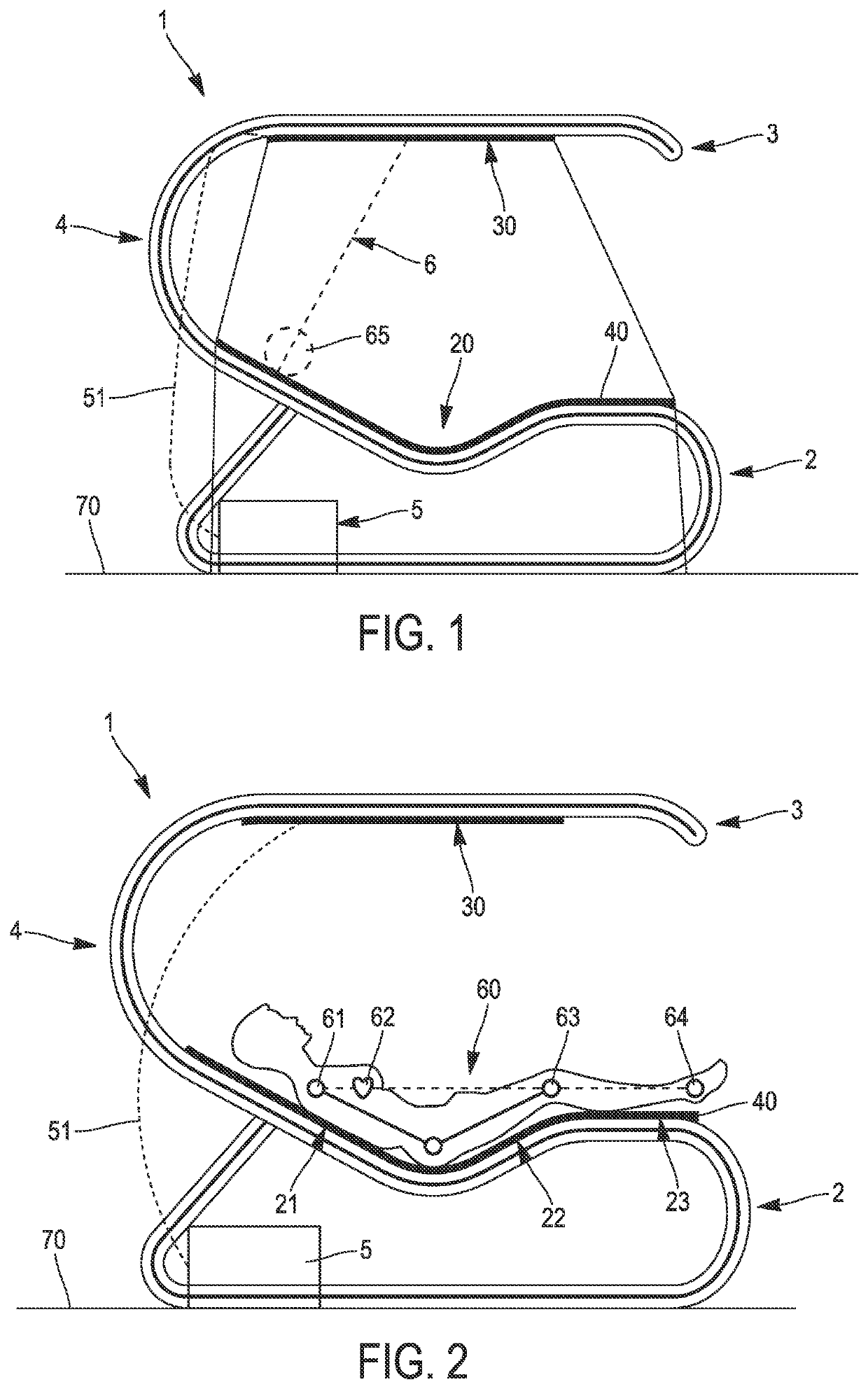Light therapy device for non-invasive stimulation of the human brain
a technology of light therapy and human brain, which is applied in the field of light therapy device for non-invasive stimulation of the brain of a mammal, can solve the problems that human stress can affect the parasympathetic nervous system, and achieve the effect of stimulating the human brain
- Summary
- Abstract
- Description
- Claims
- Application Information
AI Technical Summary
Benefits of technology
Problems solved by technology
Method used
Image
Examples
example 1
[0104]A EEG study was conducted under conditions that could be described as “stressful” or at least as “not very relaxing”. The test subjects were fitted with a large number of sensors to monitor the reaction of the subjects body to the stimulation generated by the light therapy device 1. In total fifteen subjects were tested, including ten top-level athletes. The tests were conducted in a space where the researchers were physically present, along with the requisite computer and electronic equipment for taking measurements.
[0105]In total a test with a length of 38-minutes was completed. The test session comprising six specific programs / sequences was deliberately interrupted six times to allow calibration of the measurements.
[0106]The hypothesis was that the panel of high-level athletes could overcome this “not very relaxing” environment more easily as they are accustomed to putting their body in circumstances of stressful nature. The use of rigorous protocols is similar in every res...
example 2
the Light Therapy Device on Two Populations with Different Stress Levels: Impact on Physiological Variables and Sleep Quality
[0107]According to the prior art comparative performances of different therapies and meditative practices are correlated to the reduction in blood pressure of hypertensive people (HBP—High Blood Pressure). See for instance, Dickinson (Dickinson et al. Lifestyle interventions to reduce raised blood pressure: a systematic review of randomized controlled trials. 2006 February; 24(2):215-33.)
[0108]The average observed in these studies corresponds to a decrease of −5.0 mmHg in systolic blood pressure and −2.8 mmHg in diastolic blood pressure.
[0109]When observing the greater performance (Patel 1988: Patel C, Marmot M. Can general practitioners use training in relaxation and management of stress to reduce mild hypertension? BMJ 1988; 296: 21-24.), the average value recorded is a diminution of −14.5 mmHg in systolic blood pressure and −6.9 mmHg in diastolic blood pres...
PUM
 Login to View More
Login to View More Abstract
Description
Claims
Application Information
 Login to View More
Login to View More - R&D
- Intellectual Property
- Life Sciences
- Materials
- Tech Scout
- Unparalleled Data Quality
- Higher Quality Content
- 60% Fewer Hallucinations
Browse by: Latest US Patents, China's latest patents, Technical Efficacy Thesaurus, Application Domain, Technology Topic, Popular Technical Reports.
© 2025 PatSnap. All rights reserved.Legal|Privacy policy|Modern Slavery Act Transparency Statement|Sitemap|About US| Contact US: help@patsnap.com



